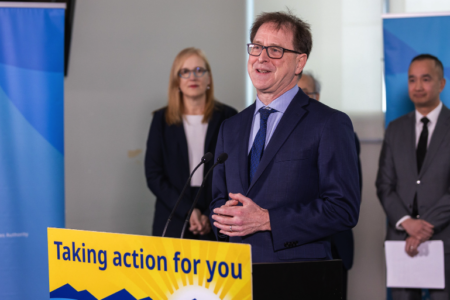Increasing the Wealth Gap -- More Advantage to the Rich?
The Conservative Party proposes to double the Tax-Free Savings Account (TFSA) contribution limit. Sounds like a good idea, doesn’t it? — enabling people to accumulate interest at a rate that makes up for cost of living increases, without having to pay income tax on that interest. Bonus!
But wait a minute — some people think it’s a lousy idea, because it benefits only people who are rich enough to put money in savings accounts, and it takes money away from government by reducing the amount of income tax it can collect. And that results in cuts to services — usually those cuts hurt the poor more than anyone else.
Think about other recent moves by both provincial and federal governments that benefit only the relatively well-off, such as income tax cuts for those in BC earning over $150,000 / year, income splitting, and increases to BC’s Medical Services Plan premiums for individuals earning over $30,000 /year. Add the proposed increase in TFSA deposit limits, and the incremetal advantages to the rich become more significant. Here’s what the Broadbent Institute has to say about it:
“TFSA doubling would cost billions more than income splitting, more skewed to the wealthy: new study
“The existing Tax-Free Savings Account scheme is projected to cost the federal government up to $15.5 billion annually when it matures, and doubling the contribution limits would shift additional billions from tax revenues into the pockets of the already well-off, a new Broadbent Institute study has found.
“Double Trouble: The Case Against Expanding Tax-Free Savings Accounts,” authored by Rhys Kesselman, is the first comprehensive assessment of the Conservative Party of Canada’s proposal to double the annual TFSA contribution limit. While the TFSA proposal has received comparatively little scrutiny, Kesselman finds that it shares and even surpasses the deficiencies of the government’s family income splitting scheme.
“Kesselman, who holds the Canada Research Chair in Public Finance with the School of Public Policy at Simon Fraser University, was a co-author of the 2001 study that laid the foundation for the TFSA, which was introduced in 2009.
“There is absolutely no case – on either economic or equity grounds – for the doubling of TFSA contribution limits. The great majority of Canadians would enjoy no significant benefits. In fact, they would bear the burdens of an expanded TFSA by enduring reduced public services or bearing the increased taxes needed to offset the lost revenues,” said Kesselman.
“He added, “While the initial revenue cost of TFSA doubling is modest, it is a ticking time bomb that would hamstring future governments.”
“Other key findings include:
- The current combined contribution limits for RRSPs and TFSAs allow ample room for the lifetime saving requirements of all workers earning up to at least $200,000 annually. Depending on the rate of return, doubling the limit means an individual starting to save in their early twenties could accumulate between $1.4 million and $8 million.
- Of individuals aged under 60 years and holding a TFSA in 2012, fewer than 16 percent had used their full contribution limits – clear evidence that the current TFSA limit is more than adequate for the overwhelming majority. That figure would be even lower now, with another three years of access to the TFSA’s cumulative contribution limits.
- The commitment by the federal government never to consider TFSAs in the income tests for the Guaranteed Income Supplement and Old Age Security benefits means annual program costs could rise by $4 billion to several times that figure by 2050.
- Usage of the current TFSA already favours individuals at higher incomes, and the long-run benefits from doubling the limits would go overwhelmingly to the wealthy and top earners.
- On account of weak or broken linkages between household savings and domestic business investment, the existing and a doubled TFSA will do little or nothing to improve the economy’s performance.
- When the existing TFSA scheme matures in 40 or 50 years, provincial governments will suffer revenue losses of as much as $9 billion annually on top of the $15.5 billion loss in revenues to the federal treasury.
“Rick Smith, executive director of the Broadbent Institute, called on the Conservative government to drop its 2011 election promise to double TFSA contribution limits, made alongside a commitment to introduce family income splitting once the federal budget was balanced.
“If income splitting is a train wreck of a policy idea, then the doubling proposal is a horror show. It would mean even more billions of lost revenues to both the federal and provincial governments with the benefits flowing overwhelmingly to the wealthy,” said Smith.”
The study is available online at: https://www.broadbentinstitute.ca/en/issue/double-trouble-case-against-expanding-tax-free-savings-accounts. A longer version of this study is available at the website of Simon Fraser University’s School of Public Policy: http://www.sfu.ca/mpp/centre_for_public_policy_research/cppr/working-paper-series.html.























